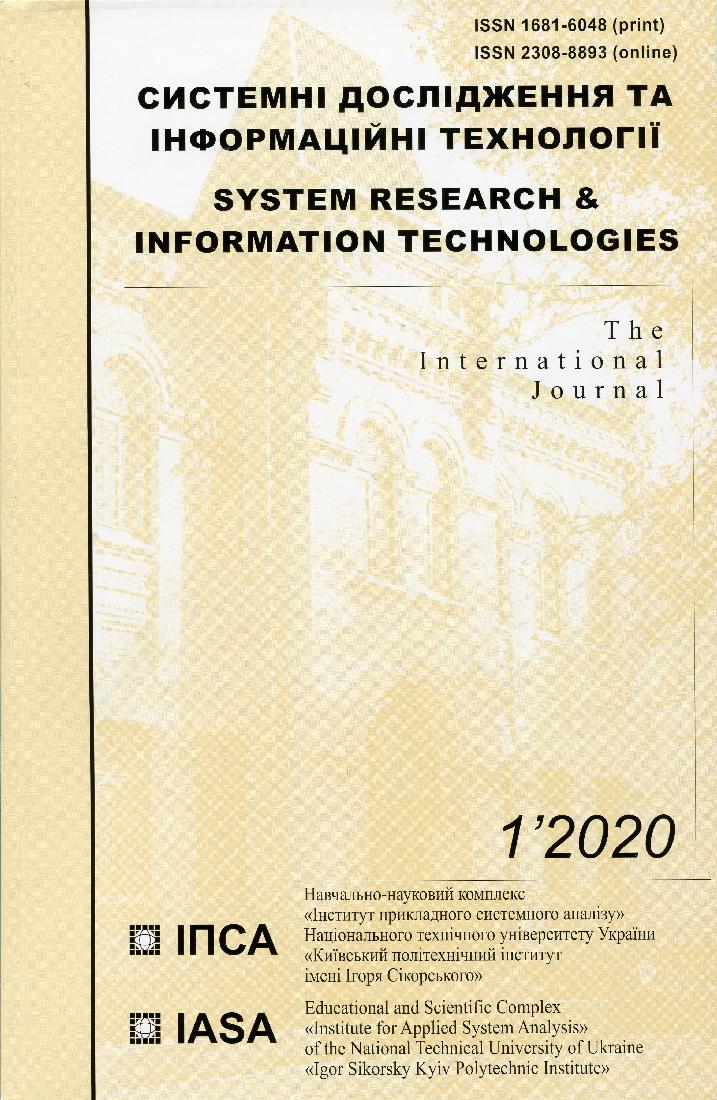Triangle method for constructing Zhegalkin polynomial: connection with Pascal's triangle
DOI:
https://doi.org/10.20535/SRIT.2308-8893.2020.1.12Keywords:
boolean function, Zhegalkin polynomial, triangle method, Pascal’s triangleAbstract
Introduced by Soviet scientist I. Zhegalkin in 1927, Zhegalkin polynomial is a way to represent a Boolean function as an exclusive or of conjunctions of variables. One of the known algorithms for constructing Zhegalkin polynomial is so called ‘triangle method’ proposed in 1985–1987 by Soviet mathematician V.P. Suprun. Applying of the triangle method mainly coincides with step-by-step constructing Pascal triangle rows using the equality Cn+1k+1 = Cnk + Cnk+1. Therefore, it would be natural to expect for the relation between the calculation of Zhegalkin polynomial by the triangle method and an arrangement of binomial coefficients in Pascal triangle. In this paper, the connection between the triangle method and constructing of Pascal triangle is studied. Besides that, a rather simple proof of the triangle method correctness is proposed. This proof is based on juxtaposition of the triangle method steps and a step-by-step construction of Pascal triangle.References
Zhegalkin I.I. O tehnike vychislenij predlozhenij v simvolicheskoj logike / I.I. Zhegalkin // Matematicheskij sbornik. — 1927. — S. 9–28.
Marchenkov S.S. Zamknutye klassy bulevyh funktsij / S.S. Marchenkov. — M.: Fizmatlit, 2000. — 128 s.
Jablonskij S.V. Vvedenie v diskretnuju matematiku / S.V. Jablonskij. — M.: Nauka. — 1986. — 272 s.
Suprun V.P. Polinomial'noe razlozhenie simmetricheskih bulevyh funktsij / V.P. Suprun // Izv. AN SSSR. Tehnicheskaja kibernetika. — 1985. — № 4. — S. 123–127.
Suprun V.P. Tablichnyj metod polinomial'nogo razlozhenija bulevyh funktsij / V.P. Suprun // Kibernetika. — 1987. — № 1. — S. 116–117.
Suprun V.P. Osnovy teorii bulevyh funktsij / V.P. Suprun. — M.: Lenand, 2017. — 208 s.
Zavalo S.T. Kurs alhebry / S.T. Zavalo. — K.: Vyshcha shk., 1985. — 503 s.
Granville A. Arithmetic Properties of Binomial Coefficients I: Binomial coefficients modulo prime powers / A. Granville // Canadian Mathematical Society Conference Proceedings. — 1997. — N 20. — P. 253–275.

